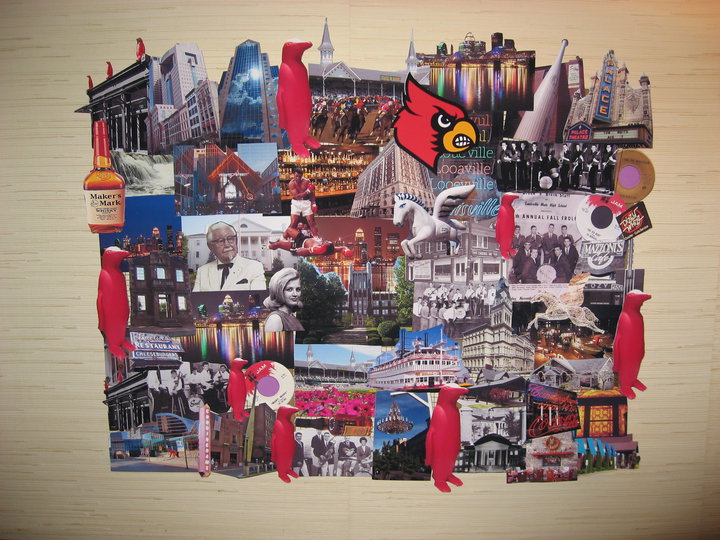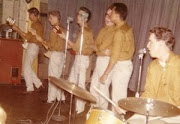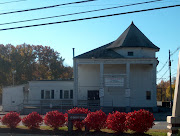His group, John Fred and the Playboys, was formed in 1956; their first hit single was 1958's "Shirley".
From One Hit Wonders
In 1956 one of the members of the group who was a big reader of Playboy magazine suggested they rename the group to “The Playboys”. “Sam Montalbano” the president and owner of “Montel” records who also managed the local Catholic Youth Center would hold dances and sock hops. He booked John and his group and a close friend “Johnny Ramistella” (better known as “Johnny Rivers”) to as many of them as they could make. Sam really liked one of the songs they regularly performed “Shirley” that was composed by both John and “Tommy Bryan”. On 23 September 1958 he took 17 year old John and his band to a recording studio owned by “Cosimo Matassa” in New Orleans. Some previous hits recorded there were “Don’t You Just Know It” by “Huey Piano Smith & The Clowns”, “Tutti Frutti” by “Little Richard”, “Ooh Poo Pah Doo” by “Jessie Hill” and “Jock A Mo” by “Sugar Boy Crawford”.
“Fats Domino” was at the studio this day and agreed to record a quick version of “Shirley”. John had already sang backing vocals on “My Girl Across Town” by Jazz singer and trombonist “Lester Robinson” on Sam’s “Montel” records. So Sam decided instead of having Fats record “Shirley” he asked John and his band to record it. Before they recorded the song Sam told him he was aware of another group called “The Playboys” and suggested they go by “John Fred & The Playboys”. They also had Fats’ band backing them up on the song. The flip side of the record was “My Love For You” a take off on the #9 pop hit and #1 R&B hit this year by “Chuck Willis” of “What Am I Living For”. “Shirley” was released in December and began getting a lot of airplay on the R&B stations until the disc jockeys found out the group was not black and stopped playing it.
The song debuted on the pop charts on 23 February 1959 and peaked at #82 and was on the charts for only 5 weeks. The song would become a top 10 hit in the UK in 1983 by “Michael Barratt” (better known as “Shakin' Stevens”). John next appeared in March on radio in New York City on “The Alan Freed Show” where he met “Clyde McPhatter”. Their second release in April was “Mirror Mirror (On The Wall)” that had “The Jordanaires” dubbed in with backing vocals but it failed to make the charts. In August they release “Good Lovin’”, written by “Robert Charles Guidry” (better known as “Bobby Charles”) who is said to be one of the founding fathers of swamp pop. This is not the same version that was a #2 R&B hit in 1953 for “The Clovers” a #81 pop hit for “The Olympics” in 1965 or a #1 pop hit for “The Young Rascals” in 1966.
In 1967, John Fred and band member Andrew Bernard co-wrote "Judy in Disguise", whose name is a parodic play on the title ofThe Beatles' song "Lucy in the Sky with Diamonds". The song, issued by Louisiana-based Jewel Records on the Paula label( Stan Lewis other label ), became successful, knocking another Beatles song ("Hello, Goodbye") out of the #1 chart position on the Billboard Hot 100for two weeks in January 1968.[3] It sold over one million copies, and was awarded a gold disc.[4] Although Fred actually had a well-rehearsed and talented group honed by years on the road, now known as John Fred & His Playboy Band, he was branded as a novelty act and never had another success.
Dale and Grace
In 1963, Dale Houston was working in a bar in Ferriday LA (home of Jerry Lee Lewis and his cousins Micky Gilley and Jimmie Swaggert , Sam "Montel " Montalbano approached Houston about teaming up with a female singer, Grace Broussard (born 1939) from Prarieville near Baton Rouge.Both had been singing in area bars for several years - Grace with her brother, Van Broussard .The two met and practiced on Montalbano's home piano for four hours. When Houston began to play an old song written and recorded in 1957 by Specialty Records performers Don and Dewey— "I'm Leaving It Up To You"
Montel, asleep in the next room, woke up and screamed: “Play it again. That’s a hit!” [3] The song was soon recorded and released locally on the Montel label
According to The Billboard Book of Number One Hits by Fred Bronson, the song broke at Top 40 radio station KNUZ in Houston, where it was unanimously voted the "pick hit of the week" by the station's panel of seven deejays. Montel wanted to change the key in which the violins were recorded, but was persuaded by the KNUZ deejays to leave the recording as it was. It was nationally distributed as Montel #921 by Philadelphia's Jamie/Guyden Records after negotiations by producer Huey Meaux.[7][6]
Montel's prophesy was vindicated when "I'm Leaving It Up To You" reached #1 on the U.S. chart, where it remained for two weeks.[8] The song was #1 during the week that Kennedy was assassinated and also reached #1 on the Billboard Adult Contemporary chart.
Houston appeared on Clark's American Bandstand program. In autumn 1963, Houston and Broussard toured with Dick Clark's Caravan of Stars. The Clark caravan, which also included Brian Hyland andBobby Vee, was standing on a street corner on Main Street in Dallas waving at John F. Kennedy on that fateful day. Moments later, the Kennedy limousine turned right onto, ironically, Houston Street, then turned left onto Elm Street, after which the president was killed and Texas Governor John B. Connally was seriously wounded. The group had gone back to their hotel rooms after waving to Kennedy and did not hear about the assassination until several hours later.[7]
The follow-up release "Stop And Think It Over" went to #8 in 1964. However, the popularity of The Beatles, combined with personal problems between the two performers, Broussard's homesickness, and a serious illness which landed Houston in the hospital, caused the duo to separate in 1965. Grace returned to singing with her brother.
The Uniques with Joe Stampley at the helm were based out of Shreveport, and began performing in Arkansas, Louisiana, and Texas. In 1965, The Uniques recorded, "Not Too Long Ago", the first national hit for Paula Records. One year later, they followed with "All These Things".. They were active from about 1965 to 1970, recording most of their material at Robin Hood Studios, located in Tyler, Texas.
Louisville Connections
The song "All These Things" was written by a newscaster in Louisville, Kentucky, named Tom Maxedon, written as a love song for his wife Carrie. In a time of need for supplemental income, Maxedon sold the rights to the song for $200 to an unknown producer making his rounds around the radio stations. The song hit the charts in 1966, and Maxedon's home station, WAKY in Louisville, began playing the song in their regular rotation in respect to Maxedon. "All These Things" became a nightly staple on WAKY, regularly one of their top-requested songs each night for over 10 years. The song stayed in the top 40 for just a few weeks nationwide, but was a local phenomenon in Louisville for over a decade.( So says Wikipedia )
Toussiant Mccall
and yes it was recorded in his living room in Monroe LA .
Released on Ronn Records by Stan Lewis
Mr Mccall in 1988 made a cameo appearance in the John Waters film, Hairspray, lip syncing to his hit song. ( clip is there to the left )
and you ask does Ruth Brown speak French , just like everybody else in this clip ) N'est-Ce Pas ?
Swamp Pop Music Links
http://theswamper.tripod.com/
For another time
Louisiana Hayride was a radio and later television country music show broadcast from the Shreveport Municipal Memorial Auditorium in Shreveport,Louisiana, that during its heyday from 1948 to 1960 helped to launch the careers of some of the greatest names in American music. Elvis Presleyperformed on the radio version of the program in 1954, and made his first television appearance on the TV version on March 3, 1955.












Robin Hood Studios was correct; I erred in an earlier post by referring to it as "Robbins," conflating the name of a Tyler radio DJ of the time, Randy Robbins. For the additional Louisville connection theme, consider the song "Sometimes You Just Can't Win," by Mouse and the Traps, also cut at Robin Hood Studios. The Louisville connection: the song was a hit in two places: Tyler and Louisville.
ReplyDeleteRobin Hood went on to become the sound man for ZZ Top; Mouse and the Traps featured guitarist "Bugs" Henderson, who developed into a noted Texas Blues guitarist.